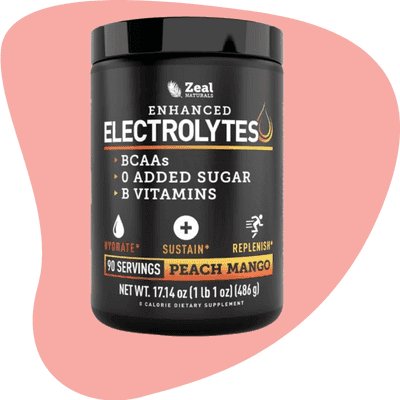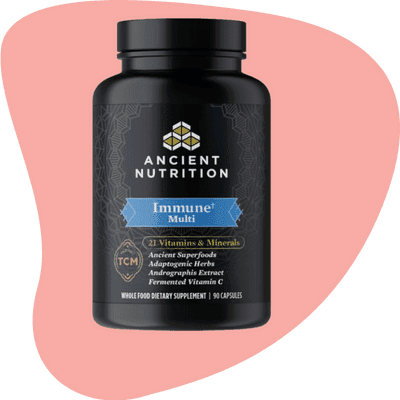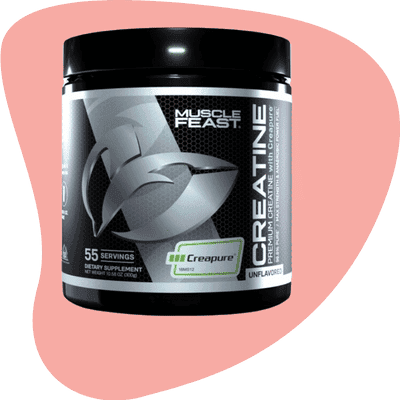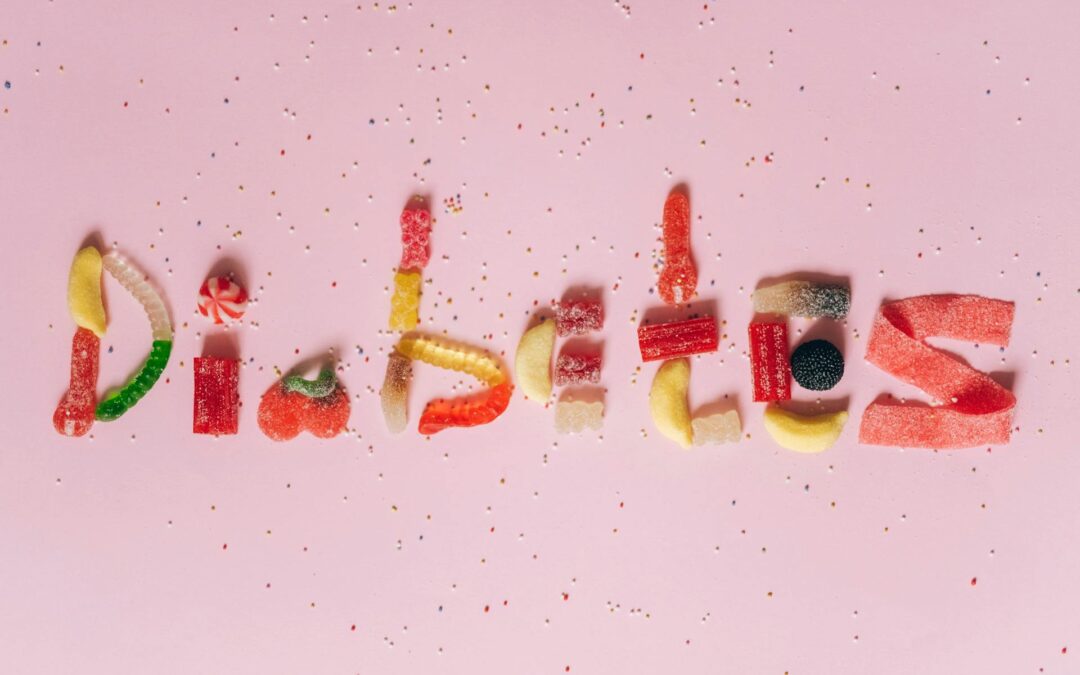Have you ever wondered if a low-carb diet could help you shed those stubborn pounds? You’re not alone! Many, including me, have lost weight by adopting a low-carb lifestyle. This is my story. It has tips, meal ideas, and success stories that helped me. They can help you, too. They will help you lose weight in a healthy, sustainable way. Let’s dive into the ups and downs, the triumphs, and the science behind how I lost 50 pounds on a low-carb diet—without feeling deprived.
How I Lost 50 Pounds on a Low-Carb Diet: My Journey Begins
My journey to losing 50 pounds started with a deep commitment to change. Like many, I struggled with diets and maintaining motivation. But something about the low-carb diet just clicked for me. Not only did I experience weight loss, but my energy, mood, and confidence took a boost too.
Why Low-Carb?
- Low-carb diets have been shown to reduce hunger and increase fat burning.
- They focus on limiting carbohydrates and emphasizing healthy fats and proteins, helping you feel satisfied without feeling deprived.
- This type of diet has a solid scientific foundation and is often more sustainable than extreme calorie-cutting plans.
Understanding the Basics of a Low-Carb Diet
So, what exactly is a low-carb diet, and why does it work? The basics are straightforward: reduce carb intake to shift your body into a fat-burning mode, encouraging it to use stored fat as fuel instead of relying on carbs. (1)
Types of Low-Carb Diets:
- Keto Diet: Very low in carbs, moderate in protein, and high in fat. (2)
- Atkins Diet: Begins with very low carbs, slowly reintroducing them.
- Paleo Diet: Focuses on natural, unprocessed foods with moderate carb intake.
Each diet has its unique approach, so you can choose one that fits your lifestyle best.
My Starting Point: Assessing Health and Setting Goals
Before diving into any diet, it’s crucial to assess where you’re starting from. For me, understanding my body composition, and health metrics, and setting clear weight loss goals gave me a strong foundation.
Setting Realistic Goals:
- Focus on small, achievable milestones instead of aiming for a big number right away.
- Track your progress, whether it’s through photos, weight measurements, or journaling.
- Stay accountable to yourself and maybe even a friend or family member who can support your journey.
Choosing the Right Low-Carb Diet for Me
Choosing a low-carb diet isn’t one-size-fits-all. I experimented with several types and eventually found a balance that worked best for my lifestyle.
Finding Your Balance:
- Experiment with different carb limits (some people feel great on 50g per day, others need closer to 100g).
- Be mindful of energy levels—find what makes you feel energized and not deprived.
- Customize based on your tastes; if you love vegetables, consider a less restrictive form of low-carb.
Initial Challenges and Overcoming Keto Flu
The beginning of any low-carb journey is filled with adjustments. I faced challenges, such as cravings and what’s commonly known as keto flu—a set of symptoms like fatigue, headache, and irritability when starting a very low-carb diet.
Tips for Managing the Adjustment Phase:
- Stay hydrated: A low-carb diet can cause initial water loss, so drink plenty of water.
- Balance electrolytes: Include foods rich in potassium, sodium, and magnesium.
- Ease into it: Slowly reduce carbs instead of going cold turkey to lessen the intensity of keto flu symptoms.
Success Story #1: Losing the First 30 Pounds
The first few weeks of the low-carb diet were tough, but seeing those first 10 pounds drop was incredibly motivating. This early success helped me stay dedicated and build confidence in the process.
Sarah, a 34-year-old graphic designer, had struggled with weight gain ever since transitioning to a desk job. Despite trying several diets, nothing seemed to work long-term. After researching low-carb diets, she decided to give it a go, aiming to shed about 30 pounds and regain her energy.
In the first two weeks, Sarah faced challenges like keto flu, but she stuck with it by keeping hydrated and incorporating foods high in electrolytes, like leafy greens and avocados. Within a month, she started seeing results—she’d lost five pounds, felt less bloated, and had more energy throughout her workday.
Over the following months, Sarah adapted to her new lifestyle, experimenting with low-carb recipes she loved, like zucchini noodles with marinara and cauliflower-crust pizza. Social situations were tricky, especially when dining out, but she learned to find low-carb options and even inspired friends to join her on her journey.
Three months in, Sarah had dropped 30 pounds and noticed a major difference in her confidence. She now enjoys working out, has more energy at work, and maintains her weight with ease. Sarah credits her success to meal planning, patience, and finding a support system in online low-carb communities.
Changes Noticed Early On:
- Energy boost: With fewer carbs, I felt lighter and more energetic.
- Improved mood: I noticed better focus and fewer mood swings.
- Clothes fit better: A surprising yet welcome side effect of those initial pounds lost.
Low-Carb Meal Planning and Recipe Ideas
One of the biggest keys to success was planning. Having meals ready that I looked forward to made it so much easier to stick to my goals. (3)
Sample Low-Carb Meal Ideas:
- Breakfast: Scrambled eggs with avocado and spinach.
- Lunch: Grilled chicken salad with leafy greens, nuts, and a vinaigrette.
- Dinner: Baked salmon with roasted vegetables.
- Snacks: Greek yogurt with berries, nuts, or a few slices of cheese.
Make sure to experiment with different low-carb recipes and find your favorites to avoid feeling limited.
Staying Consistent During Plateaus
Hitting a weight loss plateau can be incredibly frustrating. During my journey, I hit several plateaus, but they didn’t last forever. (4)
Tips to Break Through:
- Adjust calorie intake: As you lose weight, your body may need fewer calories.
- Switch up exercise routines: If you’re exercising, try new workouts to shake things up.
- Stay patient: Plateaus are normal. Sometimes, simply staying the course is enough.
Success Story #2: How I Lost 25 Pounds by Month 3
At around three months, I had lost 25 pounds and noticed significant changes in my body and mindset. My confidence grew, and the lifestyle started feeling natural and enjoyable.
Jennifer, a 29-year-old teacher, felt the toll of long hours and stress on her health. She tried calorie-restricted diets but found them too limiting, which made her look for another solution. After reading about the low-carb diet, Jennifer was intrigued by the idea of losing weight without feeling hungry all the time.
Starting slowly, Jennifer replaced her usual breakfast of toast and cereal with eggs and avocado, and her carb-heavy lunches with salads and grilled chicken. Within a month, she had lost six pounds and felt noticeably more energetic during her busy workdays.
One of Jennifer’s biggest hurdles was staying on track with her diet while managing social situations. At family gatherings and dinners with friends, she’d sometimes face pressure to eat carbs, but her goal kept her motivated. By meal-prepping low-carb options and sharing her goals with her loved ones, she built a support network that helped her stay committed.
After 3 months, Jennifer reached her goal of losing 25 pounds. She not only looked and felt better, but her stress levels had also reduced significantly. Now, Jennifer enjoys her life with balance, maintaining her weight and even inspiring a few of her colleagues to try the low-carb lifestyle for themselves.
Key Takeaways from Reaching 25 Pounds Lost:
- Small wins can accumulate into big changes.
- Your relationship with food can transform.
- The changes you make mentally are as important as physical ones.
Exercise and Physical Activity on a Low-Carb Diet
Adding exercise was a game-changer. Not only did it speed up my weight loss, but it also helped with mood and motivation. I focused on activities that complemented my diet and helped build lean muscle.
Effective Workouts for Low-Carb:
- High-Intensity Interval Training (HIIT): Short bursts of intense effort, perfect for burning fat.
- Weightlifting: Builds muscle, which boosts metabolism.
- Walking or light cardio: Gentle, sustainable ways to stay active without burning out.
Real-Life Tips for Sticking to a Low-Carb Diet in Social Situations
Social events are some of the trickiest parts of a diet. There were plenty of gatherings, celebrations, and temptations along the way. But with a little planning, I learned to navigate these events without feeling deprived.
Tips for Social Situations:
- Bring a dish: If you’re going to a potluck, bring something low-carb-friendly.
- Scope the menu: Most restaurants offer options like grilled meat, salads, or vegetables.
- Don’t stress about perfection: Sometimes, you might eat a few more carbs than planned, but consistency is more important than perfection.
Success Story #3: Hitting the 50-pound Weight Loss Mark
Reaching the 50-pound mark was a huge victory. By this point, I had fully embraced the low-carb lifestyle, and the benefits kept me going.
Mark, a 50-year-old father of two, was facing pre-diabetes and high blood pressure. His doctor suggested he make lifestyle changes, so Mark decided to try a low-carb, high-fat diet. At first, it was a challenge—Mark loved bread, pasta, and snacks—but the potential health benefits motivated him to stick with it.
In the first month, Mark faced cravings for carbs but managed by keeping his fridge stocked with high-protein, low-carb snacks like nuts, cheese, and hard-boiled eggs. By month two, he’d lost 15 pounds and noticed that his blood pressure readings were improving.
Mark started incorporating light exercise, walking three times a week, and eventually felt confident enough to add weightlifting. At the six-month mark, he had lost 60 pounds, his pre-diabetes reversed, and his energy levels were better than they’d been in years.
Today, Mark has maintained his weight loss and manages his health with a low-carb diet. He shares his story to encourage others with similar health concerns, especially those hesitant to give up carbs, that it is possible to change your life with the right mindset.
Celebrating the 40-pound Milestone:
- Enjoying improved physical health and mental clarity.
- Fitting into clothes I hadn’t worn in years.
- Feeling a renewed sense of control over my body and habits.
Common Mistakes to Avoid on a Low-Carb Diet
Like any diet, the low-carb approach has its challenges. Here are some mistakes I made and lessons I learned along the way.
Avoid These Mistakes:
- Overeating fats: While fats are key, it’s easy to go overboard.
- Ignoring fiber: Make sure to eat enough low-carb vegetables for fiber.
- Focusing too much on the scale: Success isn’t just about the numbers; pay attention to how you feel.
Supplements and Nutrients on a Low-Carb Diet
Supplementing in the right way on a low-carb diet can help fill in any nutritional gaps. I used a few supplements to keep my energy levels high and avoid deficiencies. Here’s a look at key supplements and nutrients that can support you on a low-carb journey. (5)
Recommended Supplements:
1. Electrolytes: Sodium, Potassium, and Magnesium
One of the most common side effects of a low-carb diet is the loss of electrolytes. Cutting carbs makes your body release more water. This causes a loss of electrolytes like sodium, potassium, and magnesium. Low levels of these minerals can cause fatigue, cramps, headaches, and brain fog. This is called keto flu. Adding these supplements to your daily routine can make a big difference.
Sodium: Most diets limit salt. Low-carb diets may need more, especially in the first few weeks. Try adding a pinch of salt to your water or meals to maintain sodium levels.
Potassium: Essential for muscle function and preventing cramps. Foods like avocados, leafy greens, and salmon are good sources. But supplements can help if you’re falling short.
Magnesium: Great for sleep, stress relief, and reducing muscle cramps. Consider magnesium supplements, especially if you’re feeling restless or experiencing cramps.
Enhanced Electrolyte Powder
The Enhanced Electrolyte Powder in Peach Mango flavor is a sugar-free hydration supplement packed with essential nutrients to support active lifestyles, keto diets, and recovery needs. With 90 convenient servings, each dose delivers a comprehensive blend of electrolytes, including potassium, zinc, and magnesium, designed to restore balance and maintain optimal hydration. Enhanced with Branched-Chain Amino Acids (BCAAs) for muscle support and B vitamins for energy, this supplement is ideal for those seeking a refreshing, flavorful way to boost hydration without sugar. Whether you’re following a keto diet or simply want to stay hydrated, this formula provides a balanced, tasty, and effective way to meet your daily electrolyte needs.
2. Omega-3 Fatty Acids
Omega-3s are important for heart health, reducing inflammation, and supporting brain function. These fatty acids are commonly found in fish like salmon, mackerel, and sardines. But, if you’re not eating fish regularly, fish oil supplements can be a great addition. They help balance the ratio of omega-6 to omega-3 in your diet, promoting optimal health on a low-carb plan.
Triple Strength Omega-3 Fish Oil
The Triple Strength Omega-3 Fish Oil supplement provides a potent dose of essential fatty acids, delivering 3,600 mg per serving with over 2,100 mg of Omega-3s, including 1,300 mg of EPA and 860 mg of DHA. This premium formula is crafted to support heart, brain, and joint health while aiding in reducing inflammation and promoting overall wellness. Designed for optimal absorption and quality, this burpless formula minimizes fishy aftertaste, making it easier to enjoy the benefits of high-strength Omega-3s without discomfort. With 120 softgels in each bottle, this supplement is ideal for those looking to boost their intake of essential fatty acids in a convenient, high-quality form.
3. Fiber Supplements
Low-carb diets promote vegetables. But you may still get less fiber than your body needs. This is especially true if you eat a lot of protein and fats. Fiber supplements, like psyllium husk or chia seeds, can aid digestion. They can also prevent constipation, a common side effect of low-carb diets. Fiber supports gut health and regulates blood sugar. This helps those watching their carb intake.
Gobiotix
The GOBIOTIX Fiber Supplement offers a convenient and effective way to support gut health and digestive regularity with a prebiotic, soluble fiber powder. Unlike traditional gummies, this supplement is sugar-free, gluten-free, and designed for those following keto or vegan lifestyles. Each serving contains a carefully formulated blend of prebiotic fibers that nourish beneficial gut bacteria, helping to enhance digestion, boost immunity, and maintain a balanced gut environment. Tasteless and easy to mix into water, smoothies, or your favorite beverage, this versatile fiber supplement is a gentle yet powerful option to improve digestion and promote overall wellness.
4. Multivitamins
A good multivitamin can help fill any gaps. This is true if you’re limiting fruits, grains, and other foods. They are often high in essential vitamins and minerals. Look for a multivitamin that includes:
Vitamin D for immune health and mood support
Vitamin B-complex helps with energy levels and metabolism
Vitamin C to support the immune system and skin health
Ancient Nutrition’s Multivitamin
Ancient Nutrition’s Multivitamin for Immune Support combines 21 essential vitamins and minerals, including Vitamin D, Vitamin C, and turmeric, to support immunity, heart health, and stress relief. Designed for those on keto or low-carb diets, it helps bolster natural defenses and promotes well-being. With 90 capsules per bottle, it provides daily immune-boosting benefits and antioxidant support, making it ideal for those seeking a nutrient-rich, keto-friendly multivitamin to support overall health and resilience.
5. MCT Oil for Energy and Mental Focus
MCT (Medium-Chain Triglyceride) oil is a popular low-carb and keto supplement. The body rapidly absorbs these fats and converts them into ketones. They provide a fast, clean energy source. Many use MCT oil in coffee or smoothies for a mental boost. It helps, especially in the early stages of a low-carb diet.
Viva Naturals Organic MCT Oil
Viva Naturals Organic MCT Oil is a premium, USDA-certified organic oil derived from coconuts, ideal for those following keto, paleo, or low-carb lifestyles. With 32 fl oz of pure MCTs (C8 and C10), it’s crafted to enhance energy, mental clarity, and sustained focus. Its unflavored formula easily blends into coffee, smoothies, or salads, providing a clean source of fuel without carbs. Non-GMO and free from fillers, it’s a versatile choice for those seeking high-quality MCT oil to support wellness and cognitive function.
6. Probiotics for Digestive Health
A low-carb diet can change the gut microbiome. So, adding a probiotic may help digestion and nutrient absorption. Choose a high-quality probiotic with many strains. It will help balance your gut. This is vital for your health. It may also ease bloating or indigestion from a low-carb diet.
Physician’s Choice Probiotics
Physician’s Choice Probiotics 60 Billion CFU is formulated with 10 diverse probiotic strains and organic prebiotics to support digestive and immune health for both men and women. Designed to help with occasional constipation, gas, bloating, and diarrhea, this powerful blend of probiotics supports gut health and enhances nutrient absorption. With 60 billion CFUs per capsule, it’s ideal for daily use, helping balance the gut microbiome and promote overall wellness. Suitable for those seeking digestive support in a potent, non-GMO formula.
7. Creatine for Strength and Muscle Preservation
If you’re adding exercise, especially strength training, creatine can help. It is a good supplement. It boosts muscle strength, endurance, and recovery. So, you can work out more effectively. Low-carb diets can lower muscle glycogen. Creatine can help maintain strength on a low-carb plan.
Muscle Feast’s Creapure Creatine Monohydrate Powder
Muscle Feast’s Creapure Creatine Monohydrate Powder is a premium supplement designed for muscle growth, strength, and recovery. Made with Creapure, a high-quality form of creatine monohydrate, this powder is vegan, keto-friendly, and gluten-free, supporting a range of dietary needs. Perfect for enhancing workout performance, it’s especially effective for those aiming to build lean muscle and recover efficiently. Its unflavored formula easily mixes into any drink, offering flexibility for pre-and post-workout routines without added flavors or fillers.
8. Calcium for Bone Health
Low-carb diets often reduce dairy intake. So, calcium intake can sometimes drop. If you limit dairy, consider calcium supplements. They help bones and support your heart, muscles, and nerves.
Ancient Nutrition’s Calcium Supplement
Ancient Nutrition’s Calcium Supplement combines calcium with Vitamins D and K2, supporting strong bones, muscle recovery, and immune health. This supplement is specially formulated for paleo and keto lifestyles, making it an ideal choice for those on low-carb diets. With 90 capsules per bottle, it provides a balanced boost for overall bone density and effective calcium absorption thanks to Vitamin D, while K2 ensures proper calcium distribution in the body. This supplement is crafted with quality, and suitable for both keto and paleo diet needs.
Success Story #4: Reaching the Goal – 55 Pounds Lost
Finally, the day came when I reached my 55-pound weight loss goal. It was a moment of immense pride, and it reminded me of how far I had come.
Alex, a 42-year-old marketing executive, had tried almost every diet out there—counting calories, juice cleanses, and even intermittent fasting. He’d lose weight, but it always came back. Frustrated with the cycle, Alex decided to try something different and started a low-carb diet, hoping to lose around 50 pounds and break the yo-yo dieting cycle.
Alex lost ten pounds in the first month and noticed he didn’t feel as hungry between meals. He started exploring new recipes and found easy swaps, like using cauliflower rice instead of traditional rice and zucchini noodles in place of pasta. By the second month, he was down 20 pounds and began enjoying his meals more than ever.
Alex’s turning point came when he hit a weight loss plateau at around 30 pounds. Instead of giving up, he incorporated weight training and focused on his overall health rather than just the scale. This new approach helped him break the plateau; by the one-year mark, he had lost 55 pounds.
Now, Alex maintains his weight with a sustainable low-carb diet and focuses on living a balanced life. He shares his journey with others, emphasizing that lasting change is possible if you focus on small, consistent steps. Alex has found a rhythm that works for him and, for the first time in years, is free from the yo-yo dieting trap.
Reflections on Reaching 55 Pounds Lost:
- The mental resilience built along the way is invaluable.
- A healthy lifestyle has become second nature.
- I’m excited to maintain this new lifestyle and inspire others.
Maintenance: Life After Weight Loss
Losing weight is one thing, but maintaining it is another. Here’s how I approached life after reaching my goal weight.
Maintenance Tips:
- Continue meal planning and tracking.
- Stay active to keep your metabolism high.
- Remember that consistency is key—it’s a lifestyle, not a diet.
Mental and Emotional Impact of Weight Loss
Weight loss isn’t just physical; it affects you emotionally and mentally, too. I gained confidence but also faced some challenges related to body image and self-perception.
Key Insights:
- Losing weight can improve self-esteem but may bring up unexpected feelings.
- It’s important to work on mental health alongside physical health.
- Surrounding yourself with positive support is crucial.
Community and Support in a Low-Carb Journey
One of the best parts of this journey was the support from friends, family, and even online communities. Sharing stories and hearing about others’ journeys kept me motivated.
Finding Support:
- Join low-carb forums and social media groups.
- Share your success stories to inspire others.
- Find a friend to join you or hold you accountable.
Frequently Asked Questions
Q1: What’s the difference between low-carb and keto?
Low-carb diets can vary in carb intake, while keto typically has under 20g per day.
Q2: How fast can I expect to lose weight on a low-carb diet?
This varies, but many people lose 1-2 pounds per week.
Q3: Are low-carb diets safe long-term?
Generally, yes, but it’s best to consult with a healthcare provider.
Q4: What are the best foods to eat on a low-carb diet?
Focus on lean proteins, healthy fats, and low-carb vegetables.
Q5: Can I have cheat days on a low-carb diet?
Occasional indulgences are okay, but frequent cheat days may slow progress.
The Bottom Line: How I Lost 50 Pounds on a Low-Carb Diet
Losing 50 pounds on a low-carb diet has been life-changing, both physically and mentally. If you’re looking for a sustainable, satisfying way to lose weight, I highly recommend giving low-carb a try. Remember to stay patient, celebrate your progress, and keep pushing forward—because every small step counts!
















0 Comments